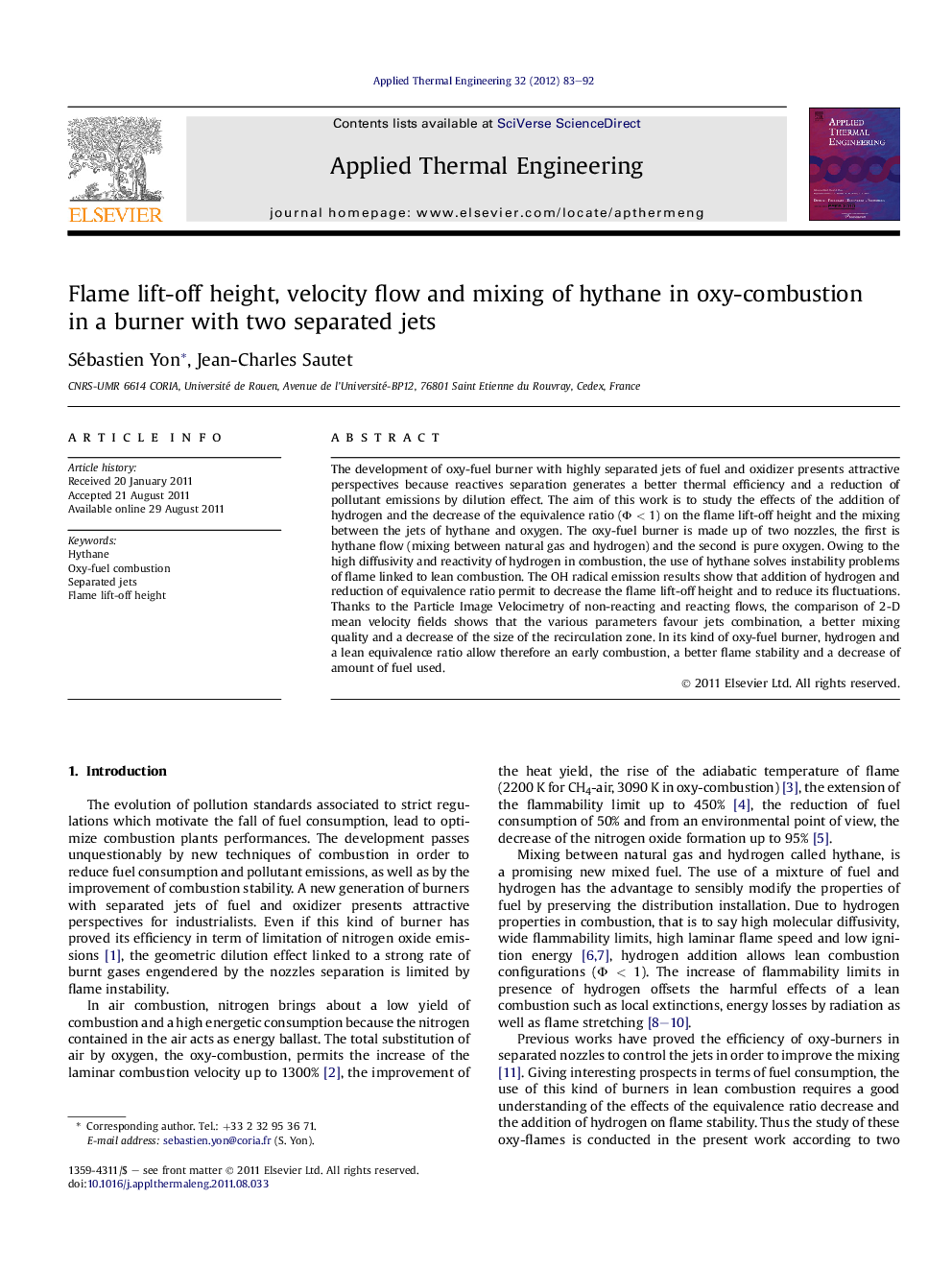| Article ID | Journal | Published Year | Pages | File Type |
|---|---|---|---|---|
| 647572 | Applied Thermal Engineering | 2012 | 10 Pages |
The development of oxy-fuel burner with highly separated jets of fuel and oxidizer presents attractive perspectives because reactives separation generates a better thermal efficiency and a reduction of pollutant emissions by dilution effect. The aim of this work is to study the effects of the addition of hydrogen and the decrease of the equivalence ratio (Ф < 1) on the flame lift-off height and the mixing between the jets of hythane and oxygen. The oxy-fuel burner is made up of two nozzles, the first is hythane flow (mixing between natural gas and hydrogen) and the second is pure oxygen. Owing to the high diffusivity and reactivity of hydrogen in combustion, the use of hythane solves instability problems of flame linked to lean combustion. The OH radical emission results show that addition of hydrogen and reduction of equivalence ratio permit to decrease the flame lift-off height and to reduce its fluctuations. Thanks to the Particle Image Velocimetry of non-reacting and reacting flows, the comparison of 2-D mean velocity fields shows that the various parameters favour jets combination, a better mixing quality and a decrease of the size of the recirculation zone. In its kind of oxy-fuel burner, hydrogen and a lean equivalence ratio allow therefore an early combustion, a better flame stability and a decrease of amount of fuel used.
► Study of the hythane on the flame and the mixing in burner with two separated jets. ► The flame lift-off height decreases when the hydrogen fraction grows in hythane. ► Hydrogen increases the stability of the flame lift-off height. ► The P.I.V shows that hydrogen favours the mixing between hythane and oxygen.
